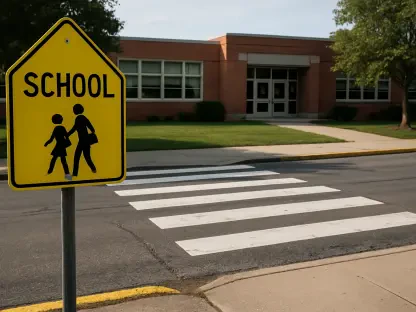Houston Independent School District (HISD), the largest school district in Texas, is confronting a pressing crisis as it navigates a significant drop in student enrollment and a substantial budget shortfall, which has led to tough decisions on staffing and resources. With a projected loss of approximately 8,000 students for the 2025-26 school year, the district faces a revenue decline of $67 million, a financial blow that underscores not only a local struggle but also a broader challenge impacting public education systems nationwide. As classrooms shrink, questions arise about how districts can sustain quality education while grappling with fiscal constraints. This situation in Houston serves as a stark reminder of the intricate balance between student numbers, funding, and the stability of educational environments, setting the stage for a deeper exploration of the immediate actions, long-term trends, and national implications of such declines.
Immediate Staffing Reductions and Their Effects
In response to the looming budget deficit, HISD has taken decisive steps to align its workforce with the reduced student population. The district recently disclosed the layoff of 160 uncertified teachers and 54 other staff members, while also reassigning 232 teachers to vacant roles. Termed “staff leveling” by district spokesperson Trey Serna, this process is designed to ensure that staffing matches enrollment figures. The focus on trimming numbers while maintaining a commitment to classroom effectiveness highlights the harsh reality of funding tied directly to student counts. For many educators, these changes bring uncertainty and disruption, as the district prioritizes operational efficiency over job security in some cases. The immediate impact is felt not just in payroll adjustments but also in the morale and stability of the educational community, where sudden shifts can ripple through schools and affect the learning environment.
Beyond the raw numbers of layoffs and reassignments, HISD’s strategy emphasizes preserving instructional quality during these cuts. By targeting uncertified teachers for layoffs and focusing on performance metrics for reassignments, the district aims to retain its most capable educators. This approach mirrors broader recommendations from education specialists who stress that protecting student outcomes must remain paramount, even under financial strain. However, such decisions are not without controversy, as they often leave less experienced or uncertified staff vulnerable, potentially impacting diversity in teaching roles. The balancing act of maintaining high standards while reducing headcount reveals the complexity of managing a large district under fiscal pressure. As these adjustments unfold, the focus on teacher quality offers a glimpse into how HISD hopes to mitigate the negative effects on students, though the long-term consequences of a smaller workforce remain to be seen.
Persistent Enrollment Challenges in Houston
The enrollment decline prompting these staffing changes is not a sudden anomaly for HISD but part of a troubling, long-standing trend. Over the past decade, the district has seen a staggering loss of 30,000 students, a reduction that directly erodes funding since public school budgets are heavily dependent on per-student allocations. This ongoing shrinkage has placed continuous pressure on financial planning, forcing administrators to rethink how resources are distributed across schools. With fewer students, maintaining the same number of facilities and staff becomes unsustainable, leading to difficult conversations about efficiency and equity. The persistent nature of this decline underscores a deeper demographic or systemic shift that HISD must address, beyond temporary fixes, to ensure the viability of its educational offerings.
Compounding the enrollment issue is the looming possibility of school closures as a response to sustained losses. Discussions about potential closures for the 2026-27 school year are slated for later this year, adding another dimension of uncertainty for families, teachers, and communities. Such measures, while potentially necessary for fiscal health, risk disrupting local neighborhoods and displacing students, often disproportionately affecting underserved areas. The prospect of closing schools is a stark illustration of how enrollment declines can reshape the physical and social landscape of education. As HISD weighs these options, the challenge lies in balancing cost-saving measures with the need to provide accessible, quality schooling. This situation highlights the broader implications of declining student numbers, where tough choices may have lasting impacts on the district’s structure and its ability to serve all constituents equitably.
A Broader National Struggle with Student Declines
HISD’s predicament is far from unique, as public school districts across the United States grapple with similar enrollment declines and the resulting financial strain. In Florida, Orange County Public Schools reassigned over 100 teachers in September due to unexpected drops in student numbers, while Austin Independent School District in Texas is exploring consolidations to address ongoing reductions. These parallel actions demonstrate a shared challenge: adapting infrastructure and staffing to shrinking populations while striving to maintain educational standards. The national scope of this issue points to underlying factors such as demographic changes, economic conditions, and shifting parental preferences toward alternative schooling options. For many districts, the response involves painful cuts that test their resilience and ability to prioritize student needs amidst budget shortfalls.
The widespread nature of enrollment declines also brings into focus the varying strategies districts employ to cope with reduced funding. While some, like HISD, focus on immediate staff reductions, others pursue long-term solutions such as merging schools or redrawing boundaries. These differing approaches reflect local contexts but share a common goal of fiscal sustainability. However, the risk of diminished educational quality looms large, as fewer resources can strain remaining staff and limit student support services. Across the country, the conversation around declining enrollment often centers on how to minimize disruption to learning environments. As districts navigate these turbulent waters, the lessons learned from each region’s response could inform broader policies to address this systemic issue, ensuring that public education adapts without sacrificing its core mission.
Reform Efforts Amidst Financial Pressures
Under a state-led takeover since mid-2023, HISD is simultaneously pursuing ambitious academic reforms while managing budget cuts, creating a complex operational landscape. Superintendent Mike Miles, appointed to spearhead improvements in underperforming schools, has reported early successes with an increase in A- and B-rated schools for the current academic year. The goal of achieving this rating for all schools by 2027 remains a guiding priority, reflecting a commitment to elevate educational outcomes. Yet, aligning these aspirations with the reality of financial constraints poses a significant hurdle. The interplay between pushing for higher standards and implementing staff reductions illustrates the tightrope district leadership must walk, where every decision impacts both immediate operations and long-term goals.
The reform agenda adds a layer of scrutiny to HISD’s handling of enrollment declines and budget adjustments. As layoffs and reassignments reshape the workforce, questions arise about whether academic progress can be sustained with fewer resources. The focus on teacher quality during staffing cuts suggests a strategic effort to protect instructional gains, but the reduced staff numbers could still challenge the pace of improvement. Additionally, the state oversight introduces external pressures to demonstrate results, even as internal challenges mount. For HISD, navigating this dual mandate of reform and fiscal responsibility requires careful planning and transparent communication with stakeholders. The outcome of these efforts will likely serve as a case study for other districts facing similar dilemmas, highlighting the feasibility of achieving educational excellence under constrained circumstances.
Looking Ahead to Educational Workforce Shifts
As enrollment declines persist, the future of the educational workforce hangs in a delicate balance, with potential shifts on the horizon for HISD and beyond. Researchers in education economics caution that sustained drops in student numbers could lead to further layoffs and hiring freezes across districts, a trend that might paradoxically alleviate recent teacher shortages. While this could ease recruitment challenges, it also risks losing valuable talent and disrupting career paths for educators. The emphasis during layoffs on certification and performance, as seen in HISD’s approach, aims to retain the strongest teachers, but it may not fully address the broader implications of a shrinking workforce. The challenge for districts lies in managing these reductions without compromising the diversity and expertise needed for robust educational systems.
Beyond immediate staffing concerns, the long-term implications of declining enrollment prompt a reevaluation of how public education adapts to changing demographics. Districts like HISD must consider innovative strategies, such as flexible staffing models or partnerships with community organizations, to maintain service levels with fewer resources. The potential reversal of teacher shortages also raises questions about workforce equity, as layoffs could disproportionately affect newer or less credentialed educators. Moving forward, a proactive approach to planning—rooted in data-driven enrollment forecasts and stakeholder input—will be crucial. As the education sector braces for these shifts, the focus must remain on ensuring that fiscal adjustments do not undermine the commitment to delivering high-quality, accessible learning opportunities for every student.









